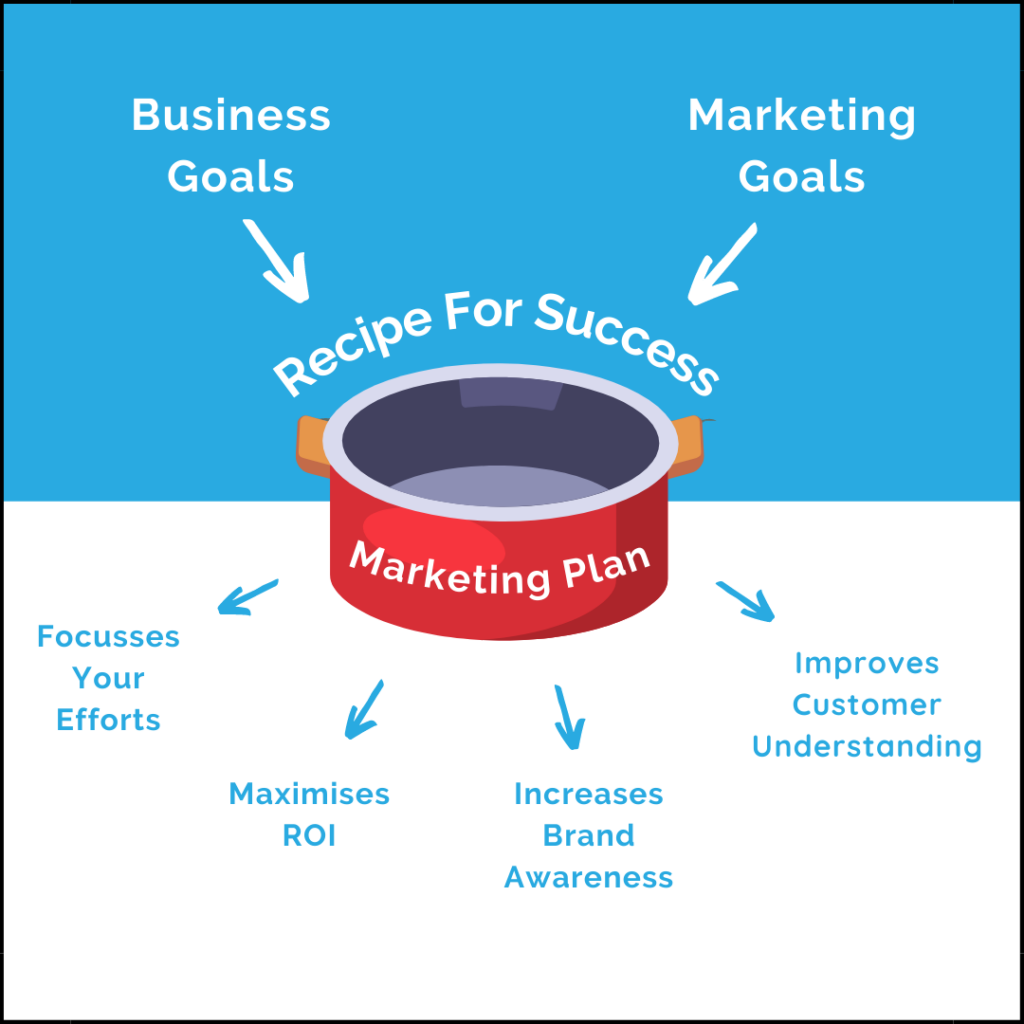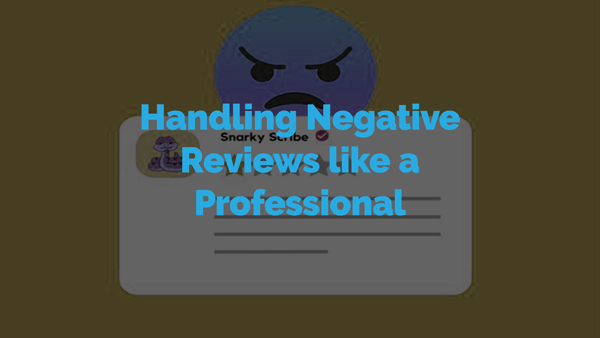Marketing is like the secret ingredient that makes any business recipe a success! It adds flavour, promotes products and services, increases brand awareness, and ultimately drives sales. But just like in the kitchen, you need to have the right ingredients to create the perfect marketing plan that aligns with your business goals. Without a clear understanding of your business objectives, your marketing efforts may go down the drain (or up in flames), wasting time and resources on ineffective strategies.
In this article, we’ll be your recipe book and spill the beans on why having a marketing plan that aligns with your business goals is crucial. Plus, we’ll serve you up a step-by-step recipe to cook up a marketing plan that sets attainable goals in line with your business objectives.
So, get your apron on, sharpen your knives, and let’s get cooking!

The Importance of Aligning Your Marketing Plan with Business Goals
A marketing plan that aligns with your business goals is like the key ingredient that makes your dish a hit – it is critical for the success of your company. By setting clear marketing goals that align with your business objectives, you can focus your marketing efforts and resources on strategies that are most likely to deliver results.
Here are some of the key reasons why aligning your marketing plan with business goals is so important:
1. Focuses Your Efforts:
When you have a clear understanding of your business goals, you can identify the most effective marketing strategies that will help you achieve those goals. This allows you to focus your efforts and resources on the most impactful activities, rather than wasting time and money on ineffective tactics.
2. Maximizes ROI
By aligning your marketing plan with your business goals, you can ensure that your marketing efforts are driving real results for your company. This means you’ll get the best possible return on your investment, as you’ll be able to measure the impact of your marketing efforts against your overall business objectives.
3. Improves Customer Understanding
A well-designed marketing plan that aligns with your business goals can also help you better understand your customers. By targeting your marketing efforts on the most relevant customer segments, you can gather data and insights that will help you improve your products, services, and overall customer experience.
4. Increases Brand Awareness
Effective marketing strategies can help you increase brand awareness and reach new audiences. By aligning your marketing plan with your business goals, you can ensure that your marketing efforts are focused on building a strong, recognisable brand that resonates with your target customers.
Creating a Marketing Plan that Aligns with Business Goals
Now that you understand why it’s so important to align your marketing plan with your business goals, let’s grab our aprons and get cooking! It’s time to create a marketing plan that sets attainable marketing goals that align with your business objectives!
1. Define Your Business Goals:
First things first, you need to have a clear understanding of your business goals. This may include goals such as increasing revenue, expanding into new markets, or improving customer satisfaction. Think about what you want to achieve. Are you looking to increase sales, boost brand awareness, or expand into new markets? Without a clear direction, your marketing efforts will be scattered and ineffective, like if you have all the ingredients to cook banana bread, but you wanted to cook a chocolate mud cake.
2. Identify Your Target Audience – and Understand Them!
Next up, it’s essential to know your audience inside and out. What are their pain points? What motivates them? What channels do they prefer to use? Understanding your audience will help you create marketing strategies that are tailored to the needs and preferences of your ideal customer.
3. Conduct a Competitive Analysis
Before you develop your marketing plan, it’s important to understand the competitive landscape in your industry. This will help you identify opportunities and gaps in the market that you can leverage to gain a competitive advantage.
4. Set Marketing Goals
Based on your business goals, target audience, and competitive analysis, you can begin to set marketing goals that will help you achieve your business objectives. These goals should be specific, measurable, attainable, relevant, and time-bound (SMART)
5. Develop a Marketing Strategy
With your marketing goals in place and your business goals and target audience in mind, you can start to cook up a marketing strategy that will help you achieve these goals. This strategy should include a mix of tactics such as social media marketing, email marketing, content marketing, and paid advertising. Each tactic should be carefully chosen to support your business goals and resonate with your target audience while meeting your marketing goals.
Tactic Suggestions
- Content marketing
- Social media advertising
- Email marketing
- Influencer partnerships
- Google Ads
- Video Promotions
6. Create a Marketing Budget
Marketing efforts can quickly add up, so it’s important to have a realistic budget in place. This will allow you to execute your marketing strategy without overspending or sacrificing other important areas of your business. Your budget should cover all the costs associated with your marketing efforts, including advertising, content creation, and any tools or software you may need.
7. Set Key Performance Indicators (KPIs)
In order to measure the success of your marketing plan, it’s important to set KPIs that align with your marketing goals. These KPIs should be tracked regularly to ensure that your marketing efforts are delivering the results you need.
8. A Well-Defined Timeline
Finally, a well-defined timeline is essential to ensure that your marketing plan is executed efficiently and effectively. Much like the timing involved with cooking an elaborate 3 course dinner, with exotic ingredients that each require different cooking times, your timeline should outline the specific actions and milestones required to achieve your marketing goals, with deadlines in place to keep everyone on track and at the dinner table at the same time.
Conclusion
Time to put the icing on the cake! Aligning your marketing plan with your business goals is like following a recipe – you need to have the right ingredients to make it work. By setting specific, measurable, attainable, relevant, and time-bound marketing goals, you can ensure that your marketing efforts are focused on strategies that deliver real results.
Don’t forget to keep your target audience in mind and use data and insights to inform your marketing goals and strategies. With a well-designed marketing plan that aligns with your business objectives, you’ll be the master chef of the marketing world. So, put on your apron and get cooking – success is just a recipe away!






